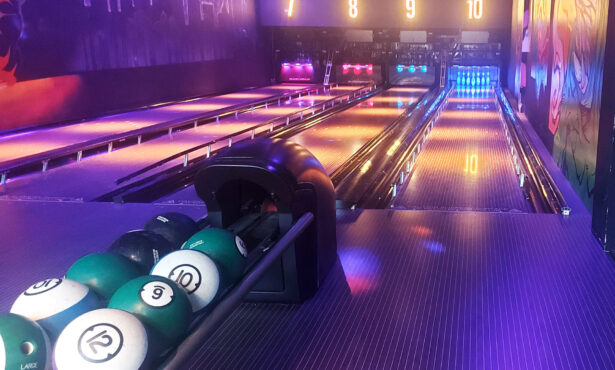Farrat was recently instructed to conduct a vibration survey on two different Isolated Foundation systems supporting Cupper Presses in a canning factory in Europe. The aim of the investigation was to evaluate and compare levels of system performance and to identify any opportunities for improvement.
The Investigation
Cupper Presses are typically connected to their foundation by resilient mounts, offering a soft connection. The inertia block placed below is supported by anti-vibration material and is therefore isolated from the rest of the factory.
Two vibration isolation systems were measured during the investigation.
The first vibration isolation system comprised of a cupper press running at 156 RPM, installed on a 3.9 m x 3.9 m inertia block. The cupper press foundation was isolated by a competitor vibration isolation material. The second vibration isolation system comprised of the same type of press running at 158 RPM, installed on a Farrat Isolated Foundation.
The latter system was configured using a 6.1 m x 4.8 m x 1.5 m inertia block supported by Farrat Isomat pads.
The Results
The vertical accelerations measured on both presses were similar (7.7 and 6.3 m/s2) since the machines were running at similar speeds. However, no reduction was observed from the inertia block to the surrounding factory floor with the first configuration. This behaviour can be explained by a design defect in the type of isolators used underneath the block, or their deterioration over time.
Some bridging connections were also observed, with one column rigidly bolted to both the inertia block and the factory floor, assisting vibrations being transferred around the area.
A significant level of vibration isolation was observed between the inertia block and the factory floor with the second configuration, comprising of the Farrat Isolated Foundation system. The system resulted in an overall reduction percentage of 99% from the machine feet to the floor and demonstrates the efficiency of Farrat Isomat pads for this type of application.
Impact on nearby machinery
Located close to the cupper press production line in a nearby office was a direct laser exposure system using a laser engraving method. This machine is used to produce masks that decorate the variety of cans produced within the factory. This process requires machine precision and stability.
It was reported by the Line Manager that this sensitive machine was subjected to excessive vibrations, altering its process quality and interrupting business functionality. To determine the influence of the press, vibrations were measured on the printer in three directions while the press was on and off.
The first few peaks – all located below 20 Hz – were generated by other machines, positioned only 7 meters from the printer. However, clear differences are noticed in all directions between 20 and 50 Hz, presenting the influence of the Cupper Press, even though it was located 30 meters away from the printer.
Note: Z axis means vertical direction, X axis is defined as parallel to the length of the machine and Y axis refers to the width of the machine.
Conclusion
Farrat was asked to find a vibration isolation solution to mitigate this problem and a bespoke solution was designed. Farrat vibration isolation pads made of polyurethane foam were installed below the printer to soften the connection from the machine to the floor and tackle the disturbing frequencies. As a result, there have been no further complaints regarding the process quality, and the issue is considered resolved.
One of the key objectives when designing a vibration isolation system is to maintain a low level of vibration within the machine to help plants reduce spoilage and increase productivity. Another key aspect is to limit vibration transmission to the surroundings. This investigation highlighted the impact that an ineffective isolation system can have on sensitive machinery positioned nearby – decreasing productivity and resulting in complex and costly engineering solutions.
The client’s requirements have been met by the Farrat Isolated Foundation solution, which has significantly lowered the movements of the machine while maintaining a quiet environment for nearby buildings. This demonstrates the efficiency of Farrat Isomat systems for Cupper Press machine applications, where bespoke design solutions are needed to solve complex engineering challenges.
Vibration Isolation Systems from Farrat
For more information on how our application engineers can work with your design teams, production managers and OEM partners to integrate industrial vibration control and Isomat System, contact our team here.
#onamission







